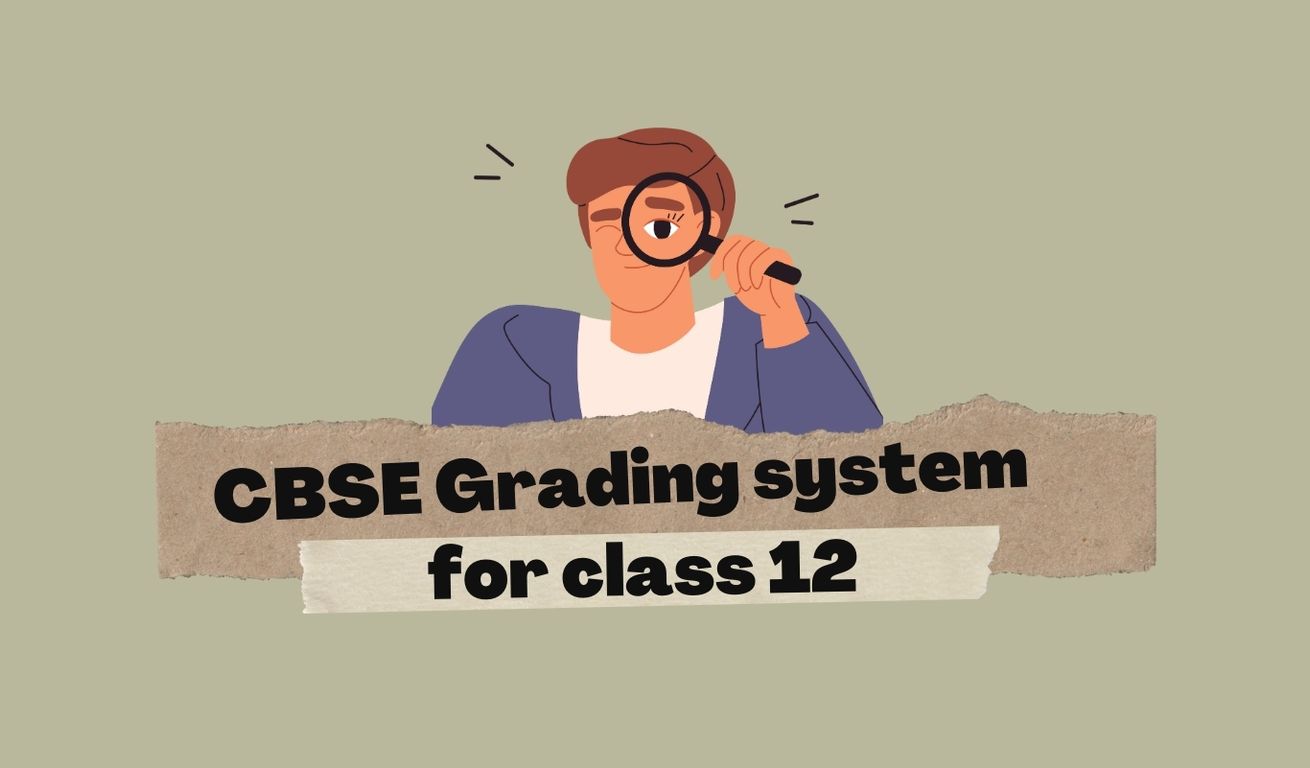CBSE Grading system for class 12




The CBSE Class 12 Grading System for 2024 uses a 9-point scale, ranging from A1 (the highest) to E. Unlike before, CBSE will no longer show overall percentages or numerical scores in the results. Instead, students will get grades for each subject. These grades are based on the marks scored, each linked to a specific grade point. This system helps make it easier to understand a student’s performance.
.png)
In the CBSE Class 12 Grading System for 2024-25, students are graded based on their performance. There are 5 main grades from A to E. Grade "A" is the highest, and Grade "E" is the lowest. The grading system follows a 9-point scale, where each grade has its grade point, and a certain percentage of students fall into each grade. The table below gives a simple overview.
Grades | Qualification |
A-1 | Top 1/8th of the passed candidates |
A-2 | Next 1/8th of the passed candidates |
B-1 | Next 1/8th of the passed candidates |
B-2 | Next 1/8th of the passed candidates |
C-1 | Next 1/8th of the passed candidates |
C-2 | Next 1/8th of the passed candidates |
D-1 | Next 1/8th of the passed candidates |
D-2 | Next 1/8th of the passed candidates |
E | Failed Candidates |
The CBSE Class 12 grading system uses a 9-point scale to determine students' marks in each subject. Both theory and practical marks are considered when calculating the final grade. The table below shows how the grading system works based on the points scale.
Marks Range | Grade | Grade Point |
91-100 | A1 | 10 |
81-90 | A2 | 9 |
71-80 | B1 | 8 |
61-70 | B2 | 7 |
51-60 | C1 | 6 |
41-50 | C2 | 5 |
33-40 | D | 4 |
21-32 | E1 | Fail |
0-20 | E2 | Fail |
.png)
The 9-point grading system evaluates the student’s overall performance and learning. Students are graded from A1 to E, with detailed feedback on their progress and development. This system helps prepare students for future opportunities and supports their growth.
The CGPA (Cumulative Grade Point Average) for Class 12 is calculated by taking the average of the Grade Points (GP) obtained in all the subjects. Here’s how you can calculate it:
For Example:
CBSE Subject | Grade Points |
Subject 1 | 9 |
Subject 2 | 8 |
Subject 3 | 10 |
Subject 4 | 7 |
Subject 5 | 9 |
Total | 43 |
Steps | Calculation | Results |
Add grade points | 9+8+10+7+9 | 43 |
Divide by 5 | 43/5 | 8.6 |
Calculate CGPA | 8.6 | |
Convert to Percentage | CGPA x 9.5 | 81.7 |
Students can easily calculate their CGPA subject-wise percentage using the table below. To do this, simply multiply your CGPA by 9.5.
Grade | Grade Point | Mark Range | Percentage ( CGPAx9.5) |
A1 | 10 | 91-100 | (10 x 9.5) = 95% |
A2 | 9 | 81-90 | (9 x 9.5) = 85.5% |
B1 | 8 | 71-80 | (8 x 9.5) = 76% |
B2 | 7 | 61-70 | (7 x 9.5) = 66.5% |
C1 | 6 | 51-60 | (6 x 9.5) = 57% |
C2 | 5 | 41-50 | (5 x 9.5) = 47.5% |
D1 | 4 | 33-40 | (4 x 9.5) = 38% |
D2 | C | 21-32 | Eligible for supplementary |
E | C | 00-20 | Eligible for supplementary |
Understanding the CBSE Class 12 grading system is essential for students, parents, and teachers to get a clear idea of a student’s performance. It also helps students identify their strengths and abilities, guiding them to choose the right career path for a successful future.
At Interval Learning, our personalized one-on-one tuition helps students improve their performance. Our expert tutors provide extra attention to areas where students need support and guide them effectively. We also offer crash courses to help students focus on key topics and score better, especially with exams approaching.
Enroll now to see the difference and help your child achieve a brighter future
Grades are given based on how well a student performs compared to others. The highest-performing students get an A1 grade, while the lowest performers receive an E.
Grades are based on how students perform compared to others. The top 1/8th of students get an A1 grade, while the lowest-performing students are given an E.
Yes, students can calculate their percentage by converting their CGPA (Cumulative Grade Point Average) into a percentage using the given formula. (CGPAx9.5)
Yes, it reduces the stress of scoring high marks and motivates students to focus on improving themselves by offering regular feedback.